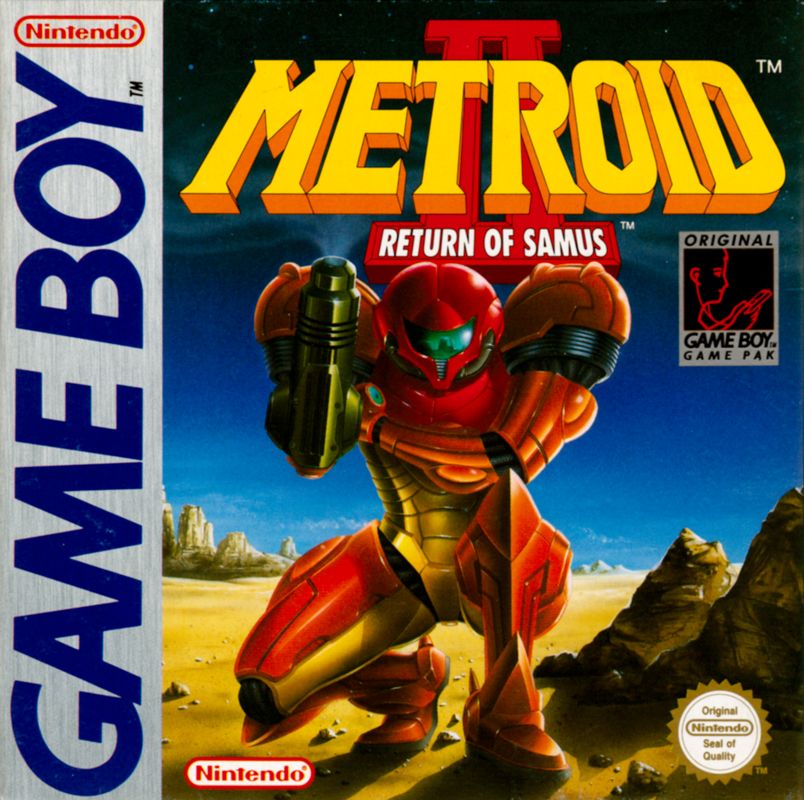
Mythinks #3
The Last Metroid #2 - Metroid II: Return of Samus - The Middle Child
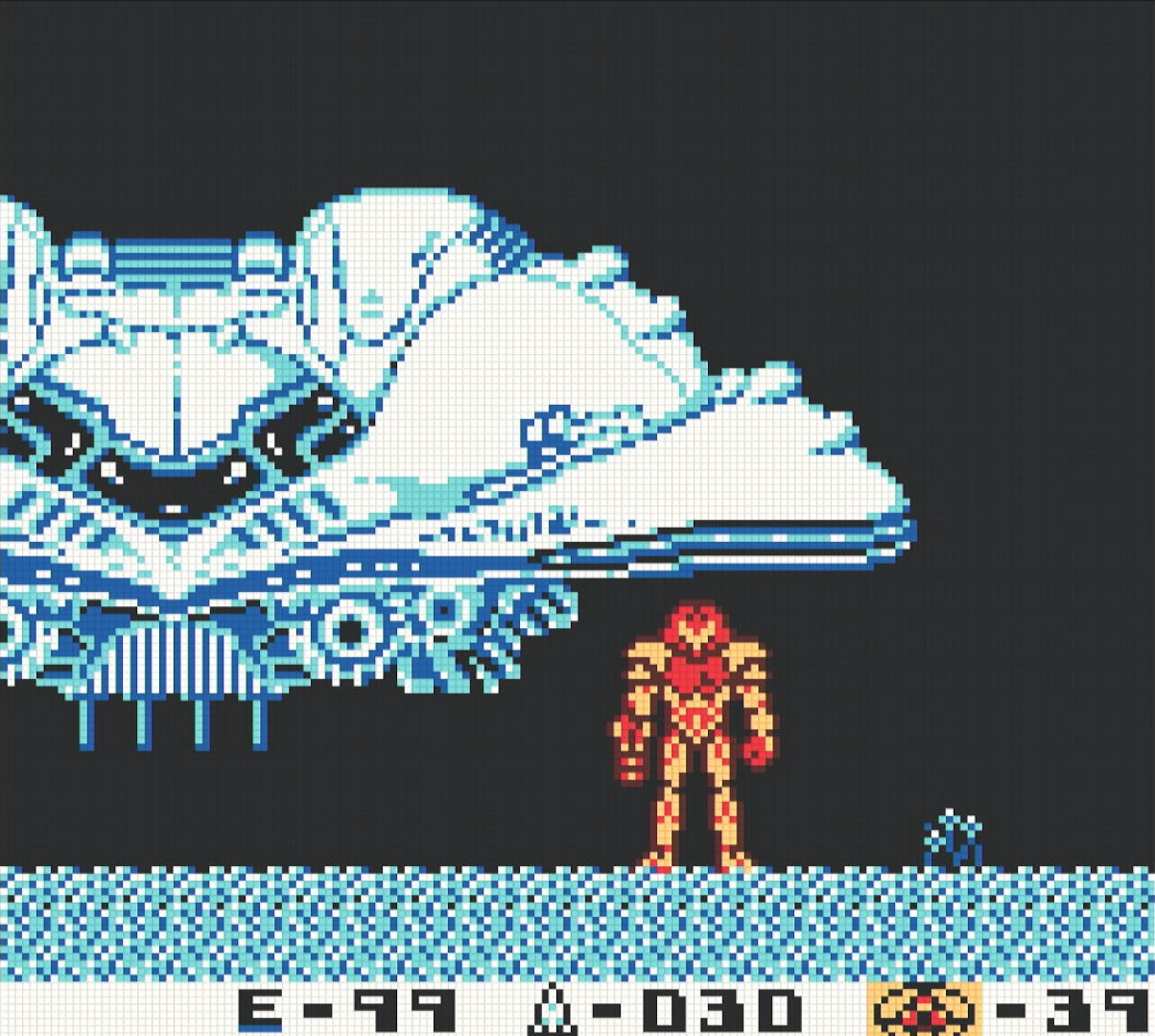
I can't imagine the undertaking it must've been to try and faithfully recreate the Metroid experience on a system as quaint as the Gameboy. But nonetheless, here is where the sequel to the NES Metroid lies. Sure, the groundwork was laid, but the Gameboy had already proved itself a bit more fit for shorter bursts of play, being more home to arcadey games, or at the most ambitious for the time, the Mario Land games. Even Zelda hadn't touched the system yet, so making a bigger, open-world adventure title for the little machine that ran on battery life was new territory. And yet, I think they pulled it off in spades, for what Metroid II is.
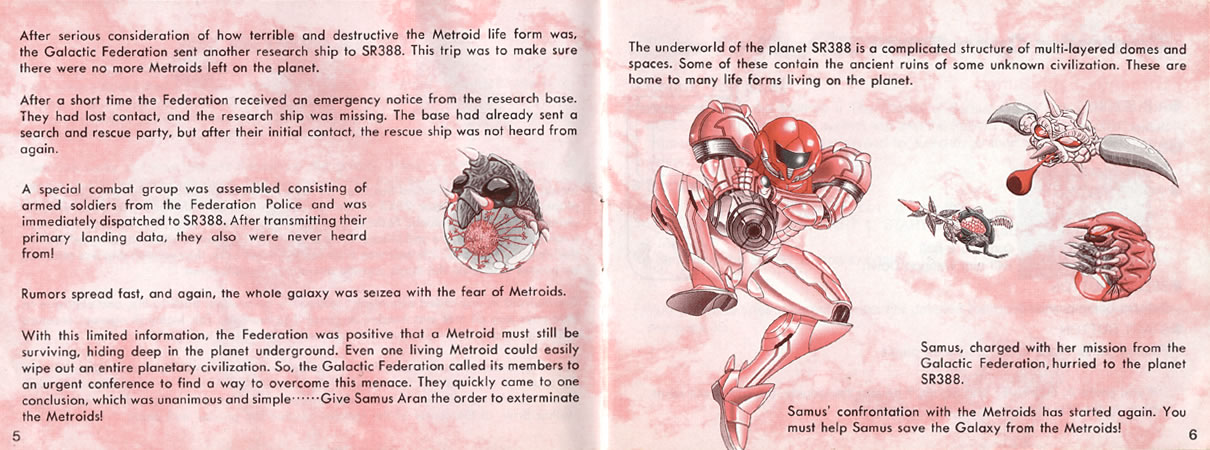
Picking up where the last game left off, the Galactic Federation has decided that the Metroids are too much of a threat to Galactic safety to be allowed to live, so they sent out a team to the Metroid homeworld of SR388 with the intention to hunt them down to extinction. It doesn't work out so well, and the team sent to the planet goes missing. So naturally, the dirty deed falls on Samus Aran to execute.
Now of course, this game isn't too different from the first on the surface. Literally. As in on this one you start on the surface. Before too long, you find the Morph Ball that Samus mysteriously misplaced since her last adventure, and continue down into the planet's depths. And it's here that the whole crux of the mission lays out the cycle this game goes on, which is to say it's almost like a series of mini-Metroidvanias. While it is large and open-ended, you have little to no reason to ever return to older areas you've cleared. Sure, you can collect expansion packs you missed, but that's only if you miss them, because indeed, to support this layer-by-layer progression, you can find every item in each area by the time you're also suited up to leave, no backtracking at any point required.
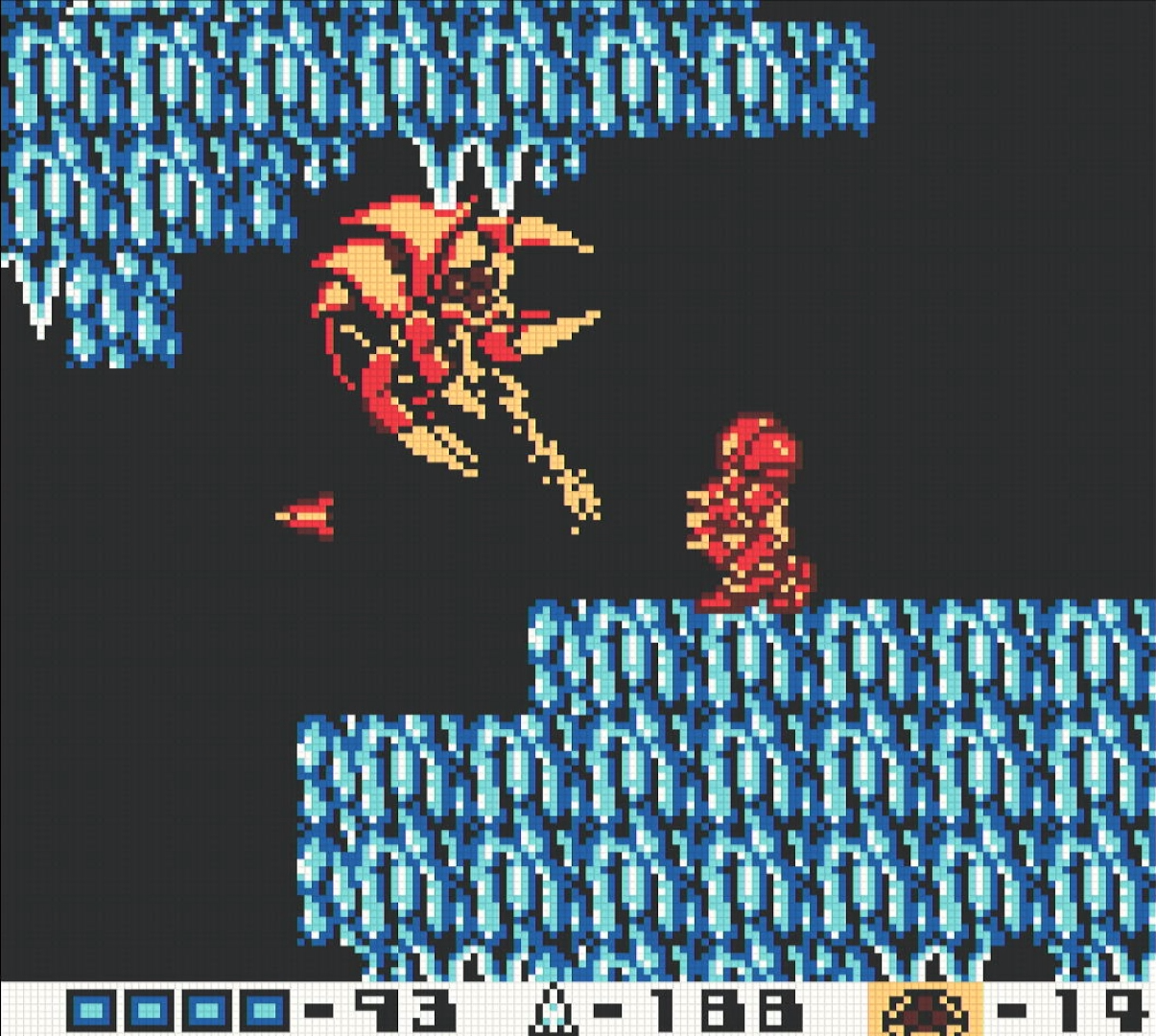
By all technicality, your progression is more objective-based than item-based in this one, with the next area being locked off by an impossible-to-tank-through pit of lava. The only way to open it up is to kill all of the current area's Metroids, the final of which will trigger an earthquake that lowers the lava's level, allowing you to leisurely continue the loop. For example, the surface area has one Metroid in it, and when you defeat it, it opens up to the next area, with its own set of items to collect and bug-shaped jellyfish to blow up. It just so happens that even more weapons are required to beat the game, the only ones being skippable at all, to my knowledge, being the Varia Suit and any beam weapon that isn't the Ice Beam. Here, you are more likely than ever to encounter the "default" order of collecting items, in part due to the firm hand the game holds you with. Not "hand-holding" as in unwilling to let the player do their own thing, but just because compared to a few other Metroid games, there's a bit of a lack of freedom in this one.
There are 39 Metroids in total to hunt down, including Alpha, Gamma, Zeta, and Omega Metroids, plus as you will find out, their "Queen" Metroid. Alphas and Gammas mostly just try to bump into you, Gammas adding a little electric wave attack. Zetas and Omegas do the same, but there they have fireballs. They have a sweetspot in their chest that is their weak point, they're otherwise invulnerable to damage. I suppose lucky the molting process removed the absolute need for the Ice Beam.
Metroid fights can be somewhat brutal and especially resource-intensive. While it is the same small variations on the same boss, more or less, where they do mix things up is the environments you encounter the Metroids in. Some of them you find in really narrow passageways, others in the middle of a sand pit that can get really claustrophobic. Another memorable fight is one that's in the middle of a really tall room, so you're having to jump after it and try to fight the thing on tiny platforms.
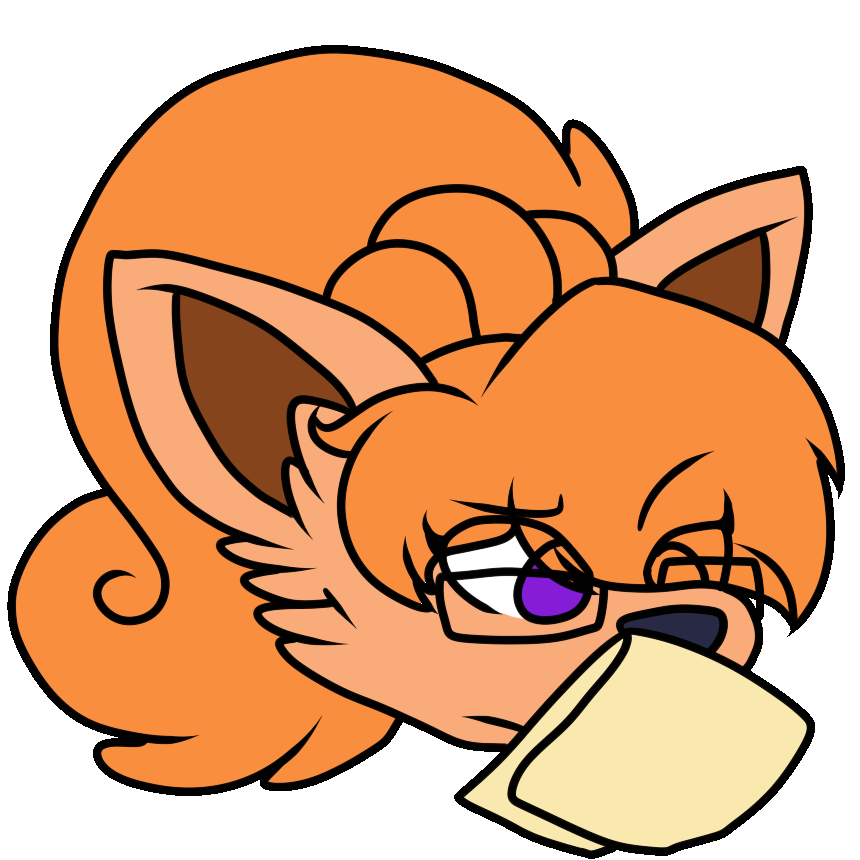 VIXI:
VIXI:
For what it adds to Metroid lore, this metamorphosis only occurs naturally on SR388, Metroids grown elsewhere simply remain in their larval form. Which feels a little like making sure the series' "mascot" and namesake stays the recognizable jellyfish monster, but sure. Something in the water, I guess.
-------------------------------------------------------
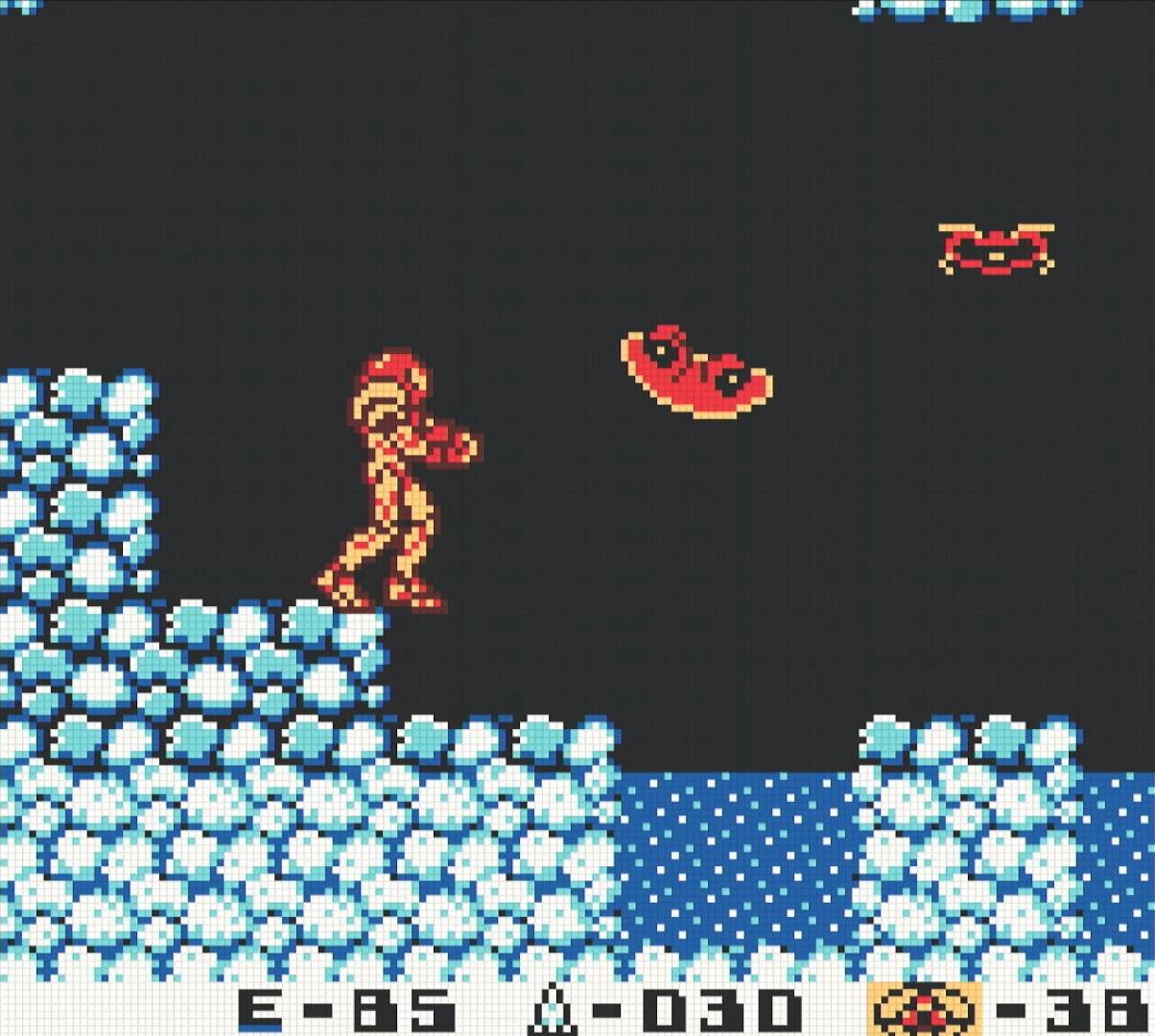
This layer-by-layer track does make the game more linear, overall, but it still doesn't sacrifice the exploration aspects of the game; like we said, each area is basically its own mini-Metroidvania map, complete with labyrinthine level design.
Just about everything feels like it's had a minor tweak to it, control-wise, and as a result, this game already feels a lot better to move Samus around. She can now crouch and shoot, instead of only being able to shoot from the hip or directly above her, which makes shooting the local ankle-biters so much easier. This does mean Morph Ball is two presses; one to crouch, then another while crouched to go into Morph Ball, but that's a fair enough sacrifice given this game's slower pace. Samus' jump also feels a little floatier, but maybe that's simply because of the screen crunch.
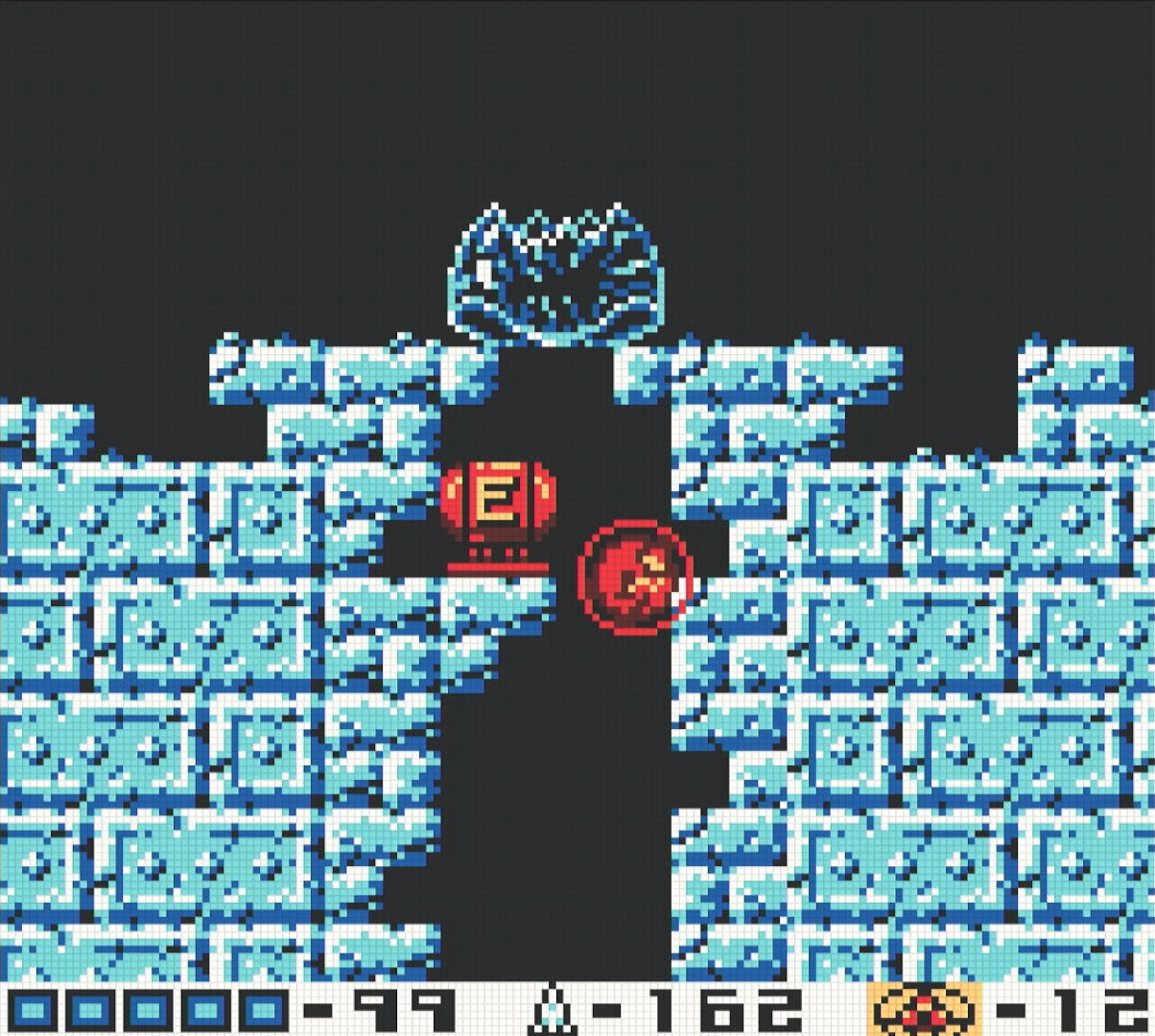
The exploration aspect is, as we've said, not quite the same as before. With the objective being the Metroid hunt, you'll find that you'll still have to navigate each area with no map. Though for most areas, it's actually not that likely to get utterly lost. Still happens, but hey. A lack of a map will do that. To make finding Metroids a little easier, you'll find molted Metroid skin lying around the place, signaling that a Metroid is nearby. On top of this, most areas have a central structure that all the other paths branch out from. Not uniformly for every area, but a consistent throughline.
But easily the most relieving addition are three fixtures spread around the map: this is the introduction of Save Stations, where obviously you can save your game rather than having to keep track of passwords. But also Energy and Ammo Recharge stations exist now, which means you no longer have to grind enemy spawns for health, this alone taking so much weight off this game. Like MAN the difference really is night and day. And what's nice is that they keep up the tension by hiding a lot of the lategame ones in weird areas, like the ceiling or bizarre little holes here and there, meaning they're something else you have to hunt down that isn't just missile packs and energy tanks!
 CELESTE:
CELESTE:
With each area self-contained, it does create more opportunity for what Metroid would feel like with a bit more focused layout design, and I don't even think they skimped out on the size of the place, either. Some areas are HUGE. I dunno if it's factually bigger than Zebes was in Metroid 1, but it certainly FEELS a lot larger. And with less copy-pasting, too!
-------------------------------------------------------
The only notable hit I've seen the exploration of the game take is that a lot of missile expansions are simply sitting out in the open, more or less, very likely because you WILL need missiles past a certain threshold to be able to even fight lategame Metroids, but also clearly to be extra sure you don't miss out on too many minor upgrades, seeing as backtracking to earlier areas would be a chore to do in a game structured like this. Heck, to my understanding and skimming of longplays, I somehow wound up getting 100% items without even actively going for it, at least beyond just poking around.
I do think the hiding of ammo and energy recharge stations is a good move to making hunting around for secrets more of an active task, but one could certainly say the tiering of secret pickups in Metroid is a little felt here; the game doesn't let curiosity go unrewarded, but there certainly is a difference between the way this game handles it and its more secretive sequels.
To quickly go over Samus' arsenal this time around: We have the staples, like Morph Ball and Missiles. Dunno if they're worth going over more than the once, since again, their add-ons are more the attraction than these upgrades in and of themselves. Though this is the once-in-a-while Metroid game where you just start with missiles!

Bomb: Morph Ball Bombs are, naturally, back as well. Not much to say here, other than they feel far more consistent this time, and that'll (relatively) remain a constant in the series from now on. Yippie!

Ice Beam: Ice Beam also returns, behaving the way it did before, enemy-made platforms and all. It still doesn't stack with other beam weapons, so by the end they actually leave a spare Ice Beam lying around so you can fight the larval Metroids properly. Beyond that endgame event, though, it's hard to recommend it over any of the other beam weapons that are in one way or another, more effective at dispatching enemies.

New!
Spider Ball: Easily this game's most exciting item, the Spider Ball lets you press down while in Morph Ball form to then stick to any surface you roll onto, including up the walls and across the ceiling. They make a lot of decent use of this by hiding things in bombable holes on the ceiling, though you'll need to be careful where you lay those bombs, as getting knocked around by one means you'll lose the Spider Ball state and you're taking a plummet. Given how many blind drops and jumps are in this game, Spider Ball can be the chicken's way down a hole, if you don't mind it being a little slower. But it's equal parts your way up a wall that, in any other exploration game WOULD be the end of the room, but you can climb up it to find secrets on the ceiling, or heck, even that there's a roof you can run on anyways.
Surprisingly, this is the Spider Ball's only appearance to date, at least in the 2D Metroids. Aside from this game's own remake, of course.

Wave Beam: More items returning, the Wave Beam is back, though it comes with two other companions in the "pure combat" Beam types. Interestingly, its shots no longer travel through walls.
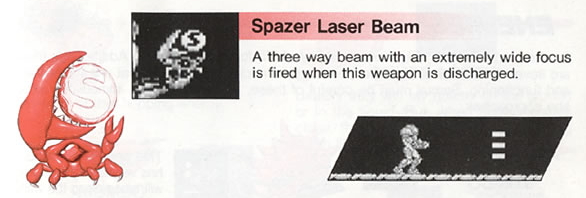
New!
Spazer Laser Beam: Spazer is a bit like Wave Beam, but instead of a waving ball, you get a three-shot spread. Pretty decent for hitting smaller enemies
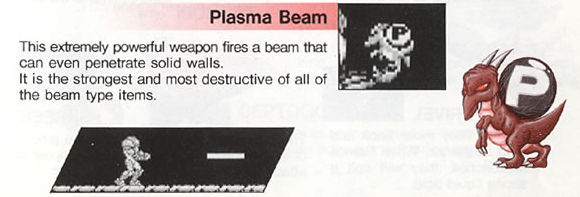
New!
Plasma Beam: Instead, the Plasma Beam gets the Wave Beam's wall-phasing effect. It fires a single laser bolt, and it deals a ton of damage, actually. As such it wound up being my weapon of choice out of these three, since most enemies die to one or two shots from it. That's right, though, this game created the holy pantheon of the classic Metroid beam weapons that most games in the series would stick to, even if their capabilities get shuffled, shifted, and adapted here and there.

High Jump Boots: It's only really a surprise this one came back with the screen crunch in mind. And funnily enough, it also sorta gets replaced by another item.

New!
Spring Ball: Now Morph Ball can jump without bombs! Yippie! For real, though, it's a shock that this item isn't a series mainstay, with it popping in and out of existence here and here, simply because it makes traversing the Morph Ball tunnels so much smoother. Even if some games only take it into account as being an actual ability to build obstacles around while in most other games its almost solely a convenience power-up. But that's getting ahead of ourselves.
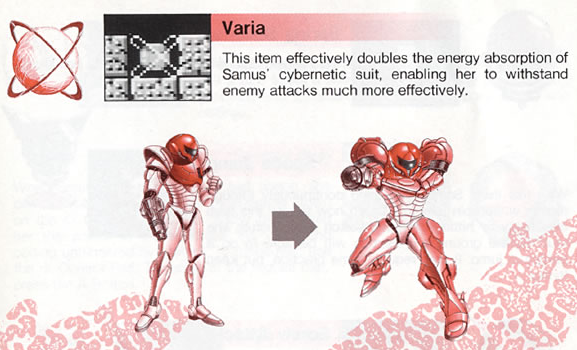
Varia Suit: Same as before, Varia suit offers double defense. Though because this game has the limited black-and-white palette, there's no color difference between it and the base Power Suit. So the sprite art guys just gave Samus her iconic giant shoulder boulders that stuck as a permanent part of her suit's design, since. There is something very not ha-ha type of funny, but incidental type of funny about how this graphical limitation ended up creating the basis of all Samus suit designs going forward. Given those massive spherical pauldrons are what turn Samus Aran from "space suit mcpower armor" to "Coolest character in the Nintendo pantheon."
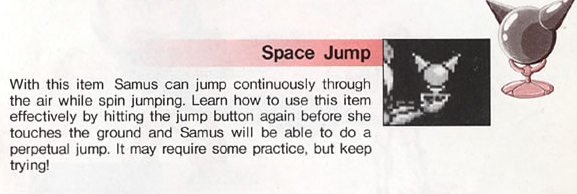
New!
Space Jump: With this new addition, Samus cam just defy gravity. If you jump with a somersault, and then jump again with the right timing; the best I can think to describe it is a bit like a yo-yo, Samus gets an additional jump, forever. So long as you get the really picky timing right. It ends up pairing well with the fact that there is a LOT of open air in this game. It's a conceptually very cool ability that's sadly bogged down by some harsh timing for something you'll have to do more than several times in a row when you do want to use it. Sure, it shouldn't be free, otherwise it's JUST infinite jumps, but it does feel quite annoying to surgically make your way higher and higher up one of the many vertical drops only to miss a single input and plummet all the way back to the bottom and you just take the Spider Elevator instead.
They do expect you to get the timing down, too, seeing how many aerial enemies are dotted around the place, and how there's a few tunnels that are coated with spikes on the ceiling AND the floor, so no using Spider Ball to cheese your way past it. There more than likely is a consistent timing to it, it can just feel ridiculously tight.

Screw Attack: Lategame upgrade and as good as ever, only really nerfed in that it isn't advisable to use against the various stages of Metroids. Naturally, though, this combos well with Space Jump, since that's also an ability that requires being in the somersaulting state as well.
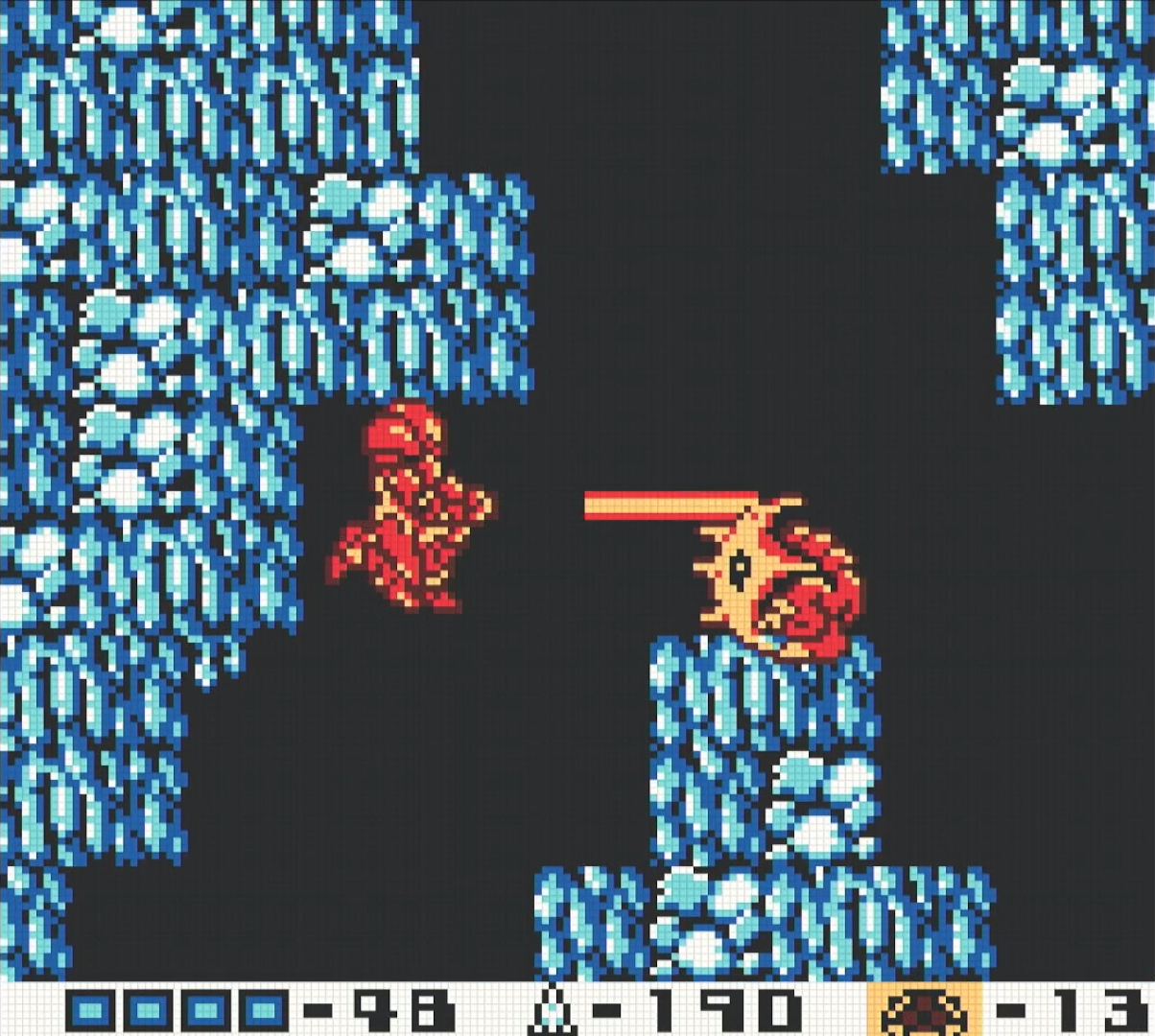
The screen crunch we keep mentioning, at first, felt like a pretty damning hindrance on the game, again, born out of necessity for the system it's on. But it started to click with me how they spun this limitation into something of a feature to sell the game's atmosphere. See, it would stand to reason that the further down you go into the depths of SR388, the darker it would be. So in a way, this limited screen real-estate kind of emulates the feeling of being in a cavern you can barely see in front of you, in. Sure, there's more than plenty of blind jumps or taking big leaps only to bonk into an enemy on the way up, but that probably WOULD be the case if it were near pitch black and you could barely see.
In general, past even the base line improvements the game makes upon its prequel, I feel like one of its strongest suits is its rancid atmosphere, which this screen crunch in part serves. Metroid 2 is rather famous among Metroid fans for its soundtrack. Er, or, lack thereof. Sure, the surface theme is up there with the original Brinstar in terms of being one of the catchiest bops in the series, and the ruins music is notably more low-energy, but still identifiable as music. When you get to the various cave ambiences, all you end up with is the bleeps and bloops of the Gameboy making sounds at you.
Many, of course, would jot this down as a mark against this game, but I think that the atmosphere wouldn't be the same if the ambience wasn't so sickeningly unsettling. When you actually play Metroid 2, the music does its job of blending into the background and feeling a bit more like diegetic noise than a tune meant for the player's ears alone. And it only elicits more unrest the deeper down you go. Not that this game is scary, necessarily, more like it's selling an utterly rancid vibe, and boy does it get there. This music is in part why this game comes dangerously close to feeling like a my-cartridge-is-haunted type creepypasta, just with less blood, glitches, and vaguely threatening messages. It effectively tells that barely anything has lived in these caves, more and more of which get emptier and emptier the longer you go, until the final area which has no enemies, almost like you're so deep in Metroid territory that they've eaten everything else.
It also gives it all the more punch when you do encounter a Metroid, and the game suddenly explodes in frantic energy, which certainly summarizes how it feels to fight these things. Unlike most enemies, the Metroids are pretty tough and stop at nothing to collide into you, almost the only thing keeping you safe being the hitstun they suffer from taking a missile hit.
Easily the most memorable setpiece, though, is when a lategame area consists of a single Alpha Metroid. Suspiciously easy, but there seems to be no catch as the earthquake denoting progress happens regardless. The only thing raising an eyebrow is that there's an extra shed Metroid hide lying around. But as you travel back into the main shaft, you'll find that your way out has been backed up by lava rather than cleared out. So by then, you have no choice but to double back and eventually find your first encounter with an Omega Metroid.
This continues into the penultimate gauntlet, where barely any regular enemies are left and you get three Omega Metroids to take down, accompanied with probably one of the most foreboding themes in the whole series, which is saying something in a series that loves its foreboding music.
This culminates into arriving in the final area to have nothing around, until the Metroid counter at the bottom wigs out and suddenly starts counting up to reveal a new batch of larval Metroids had hatched, then revealing the true final boss in the Metroid Queen. The fight feels pretty grueling, but upon defeating it, instead of being treated to a dramatic escape or final boss setpiece, you find the final surviving Metroid egg, which hatches into a newborn Metroid hatchling.
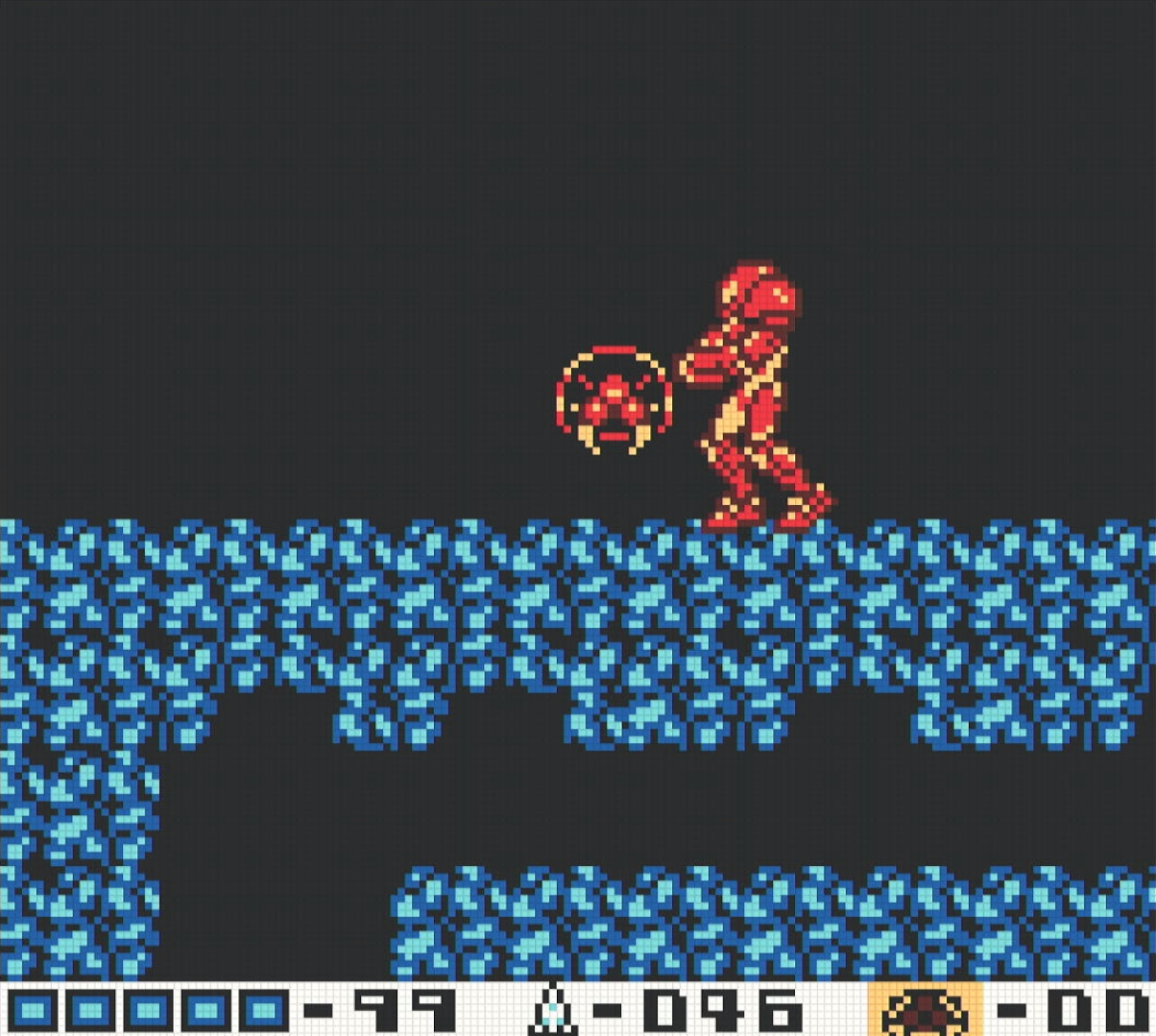
It feels relevant to mention that the more Metroids slain, the less it feels like a satisfying act. There's hardly any glory to it, it just feels like a raw survival struggle. And given the way the Metroid hatchling scene plays out, I can't help but imagine that's intentional. It isn't at all like the ending of the previous game. There's hardly any triumph to the victory, not even any desperation or hustle, it's just a walk back to the surface alongside the hatchling while just about the most melancholic music a Gameboy can muster plays.
It begs being reflective, or at least that's what I thought about when playing this for the first time. Was all this the right thing to do? Because this wasn't exactly the unambiguously righteous thing to do, unlike traveling to Zebes to stop Space Pirates from terrorizing the galaxy. It was, after all, just blasting an animal species into extinction.
Metroid 2's ending is also just plain unique, especially in retrospect. Every Metroid game from now on ends in a big escape sequence, if not at the very least a dramatic final boss encounter. Whereas this one had a more understated and somber ending.
I think it's a real shame a game like Metroid 2 has wound up, maybe not forgotten, but certainly overlooked. Or at the very least written off like The Middle Child, not having the claim of being the original that is the origin of the franchise, nor is it the oft-regarded masterpiece that is its sequel, as such it sort of sits here on the little Gameboy to be seen as the odd one out.
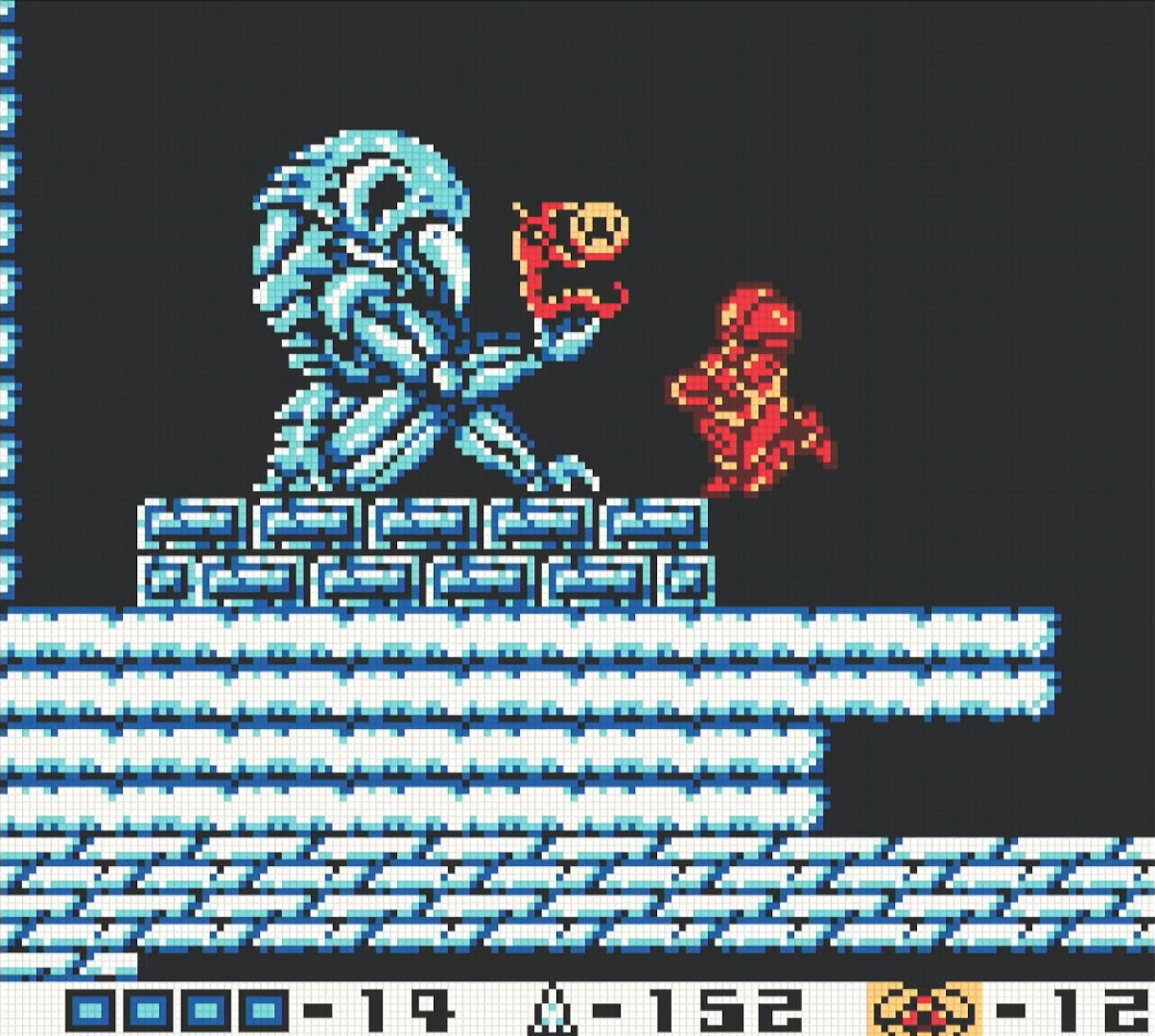
Metroid II really is a masterclass of what you can do for atmosphere on such a simple little handheld. And it does this on top of being a notable improvement from the original, just as a game, too! It's dark, dingy, dank, and dangerous, as well as quite the claustrophobia simulator, and while Metroid games at large are practically prided on their atmosphere, this game surprisingly does it better than a decent chunk of em!
Sure, maybe there's far better Metroid games out there, I'm not gonna say it's peak Metroid or anything, it's just a game that I wish got some more dues, because it's a very respectable little title that's more ambitious than folks seem to give it credit for, especially as far as its themes go.
Its only real faltering spot is how repetitious the task is, as again, the Metroids are more or less the same fight over and over, only getting more missile-spongey with each evolution. That and the loop is the same for most of the zones; explore the central structure to find the items kept within, then travel out into the branching cave systems to find the Metroids. It is, also, fairly short, so the repetition is felt a lot less, but it's nonetheless noticeable.
 LUNA:
LUNA:
It's also probably one of the easier 2D Metroids, enemies are not that much of an active threat, the only real difficult points being a handful of Metroid encounters and the Metroid Queen itself, especially if you don't have the maximum number of energy tanks for their respective points in the game. But if anything, I think that (along with the zone-by-zone progression) actually makes Metroid II a pretty decent candidate for suggesting this as someone's first Metroid game, if Metroid NES is understandably a little too brutal to finish for you. Especially if you're looking for an entry-level Metroidvania.
Perhaps in that light, the game is a bit of a mismatch, by putting on such a sinister front, only for it to not be that difficult, but I still think it kinda gets a pass, since it's a Metroid you play a LITTLE more like a survival game. Not by much, but the distinction is still there, I feel.
-------------------------------------------------------
For the most part though, this is definitely the start of the Metroid series' upward trajectory, since aside from a COUPLE games, the series is all unambiguous bangers from here. And to some extent or another, I do feel like that is in part owed to this game that vastly improved the original's foundation, was the origin of easily the most of the series' regularly re-used abilities, AND doesn't have a half-bad story, especially for a game with not only no cutscenes, but not even anything comparable to cutscenes.
I do genuinely believe this game doesn't deserved to get as overlooked as it does. I know most Metroid fans, at least as far as I've seen, at least find something to like about it, but like I said, it doesn't have the pedigree and clout Super does, maybe deservedly so because Super IS just that good, but I still see it often looked over, even compared to its own remake, which. I'll get to that when I get to that. But either way, I'LL always remember Metroid II.
-------------------------------------------------------
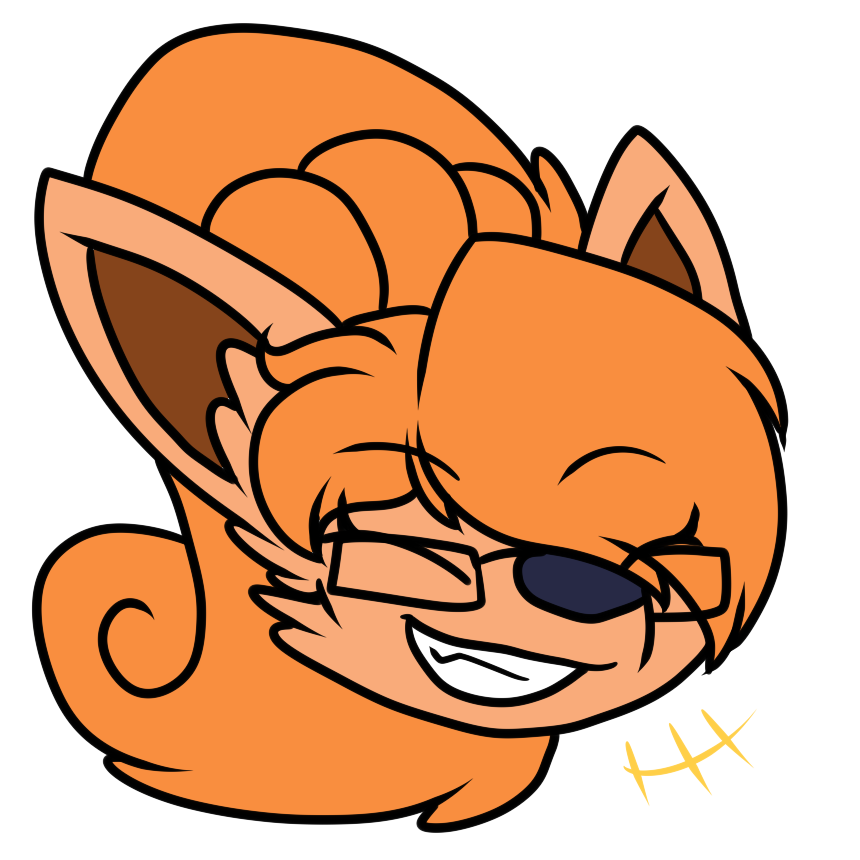 VIXI SCORE: 7.5/10
VIXI SCORE: 7.5/10
A big, marked improvement from the original, with a real sinister atmosphere. As well as striking a fine balance of the game being both more generous with pickups and energy/ammo restoration, while still not letting it sacrifice the difficulty.
 LUNA SCORE: 7/10
LUNA SCORE: 7/10
Surprisingly nice! Still a little clumsy here and there (especially with the Space Jump), but it feels a lot better to play than the first one. It's also a lot more gratifying to explore, with restoration stations feeling like worthwhile rewards for really poking around.
 JINX SCORE: 7/10
JINX SCORE: 7/10
not quite near the series' legendary status, but most certainly getting there! as we keep yammering on about, i really dig the dark atmosphere and the subtle ways this game builds up tension.
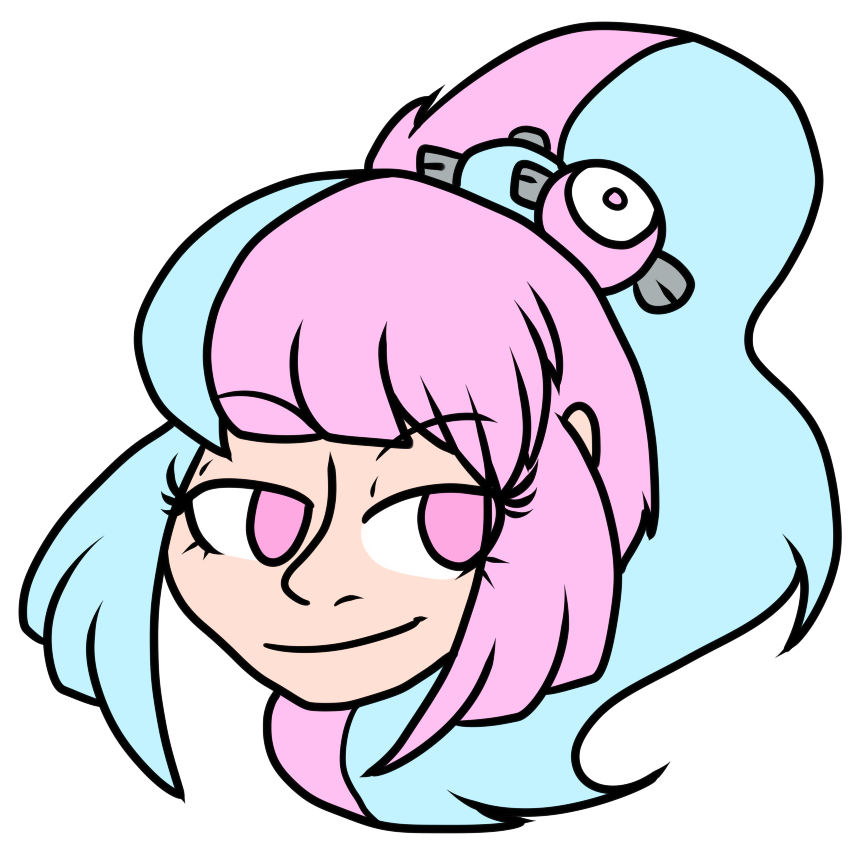 IONO SCORE: 6/10
IONO SCORE: 6/10
Still not there for me, but it's fine! The movement still feels a little janky, but it's way better than Metroid 1, so I'll take it. Not as enamored with the premise as the others, it leads to the game feeling repetitive, but it's fair enough.
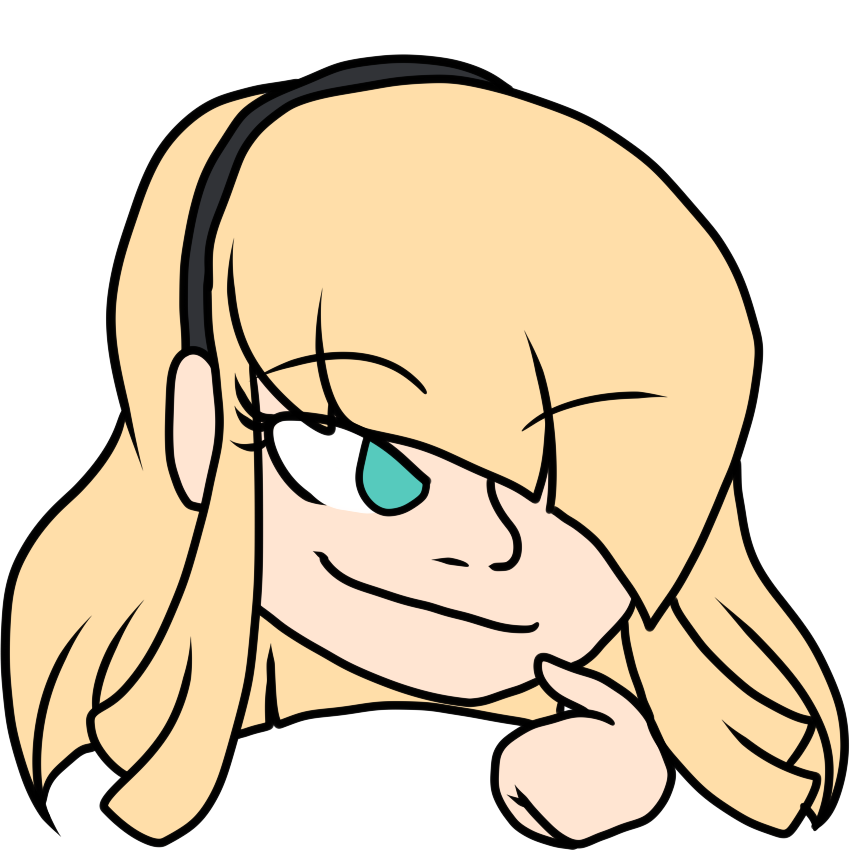 CELESTE SCORE: 7/10
CELESTE SCORE: 7/10
Short, sweet, but still a decently meaty adventure, for what it is! It goes pretty hard in just the right spots, only really faltering in some control hiccups, and a lot of silly blind jumps. Still, it steps up the original in just about every way, so hard to complain.
OVERALL SCORE: 34.5/50

Coming up next on The Last Metroid: I love my new jellyfish son. I sure hope nothing bad ever happens to them.